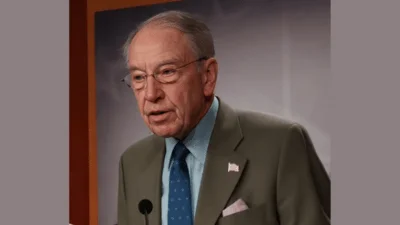“How do you eat an elephant?”
Toby Dahl asks this while he walks his ranch near Roundup, Montana. We are in the Bull Mountains, about 30 miles north of Billings. He answers his own question, and that answer speaks to his approach to forestry management.
“One bite at a time.”
Watch the story on YouTube: Conservation for the Future: Forestry Management in the Bull Mountains, Musselshell County, MT
Dahl is a fifth-generation rancher here on the same land that his great-great-grandfather settled in the late 19th century, where they’ve traditionally run cattle.
However, things have changed in time and now the livestock aren’t Dahl’s only charge. For the past 20 years, he’s been active in monitoring, maintaining, and thinning the trees that grow over the area’s low, rolling peaks. When Dahl was young, he had the opportunity to learn about forestry management at a much younger age than most.
“My dad put a chainsaw in my hand when I was 12 and had me start cutting trees down,” he says.
While some of those trees are a native part of the landscape, historic management practices have led to a massive headache for area ranchers: forest encroachment.
“Traditionally, this place is designed to burn every 20 to 30 years,” Dahl says. “We’re a very lightning-conducive area, constant lightning strikes.” However, fear of fire and active suppression has caused these recurring burns to essentially disappear, and the forest has continued to expand and grow denser. “Over the course of a hundred years with the suppression of fire, we were just losing rangeland left and right.”
“Even our roads were being encroached on, our hayfields were being encroached on—and once I started cutting trees down and started being able to look back and see the improvement of grass, then I became passionate about it.”
Dahl estimates that 75% of traditional rangeland in the area has been lost over the last century. The forest has also thickened to a point where pests and disease can easily take over, killing more trees and leaving behind more fuel for wildfires.
This leads to burns that are a lot hotter and far more destructive than fires of the past that roared through naturally mitigated stands.
“I love a healthy forest, but we have very little healthy forest,” says Dahl. In his battle to push back encroachment and manage healthy forests, Dahl uses a variety of tools.
Aside from his traditional chainsaw, he also now utilizes heavy machinery like a masticator, as well as prescribed burns. The burns, although something many still fear, are highly effective.
While Dahl’s management efforts began on his own land, they have also expanded to other properties in the area. “The uptick in interest that I have seen over the past four or five years has been based off of—at least with my neighbors—showing them what it looks like when you’re done. Because everybody that hasn’t burned in the Bulls is dealing with the same encroachment problems.”
“They wanna have a few horses, but all they have is trees,” Dahl says.
Fire and the Landscape
Wildflowers and grasses return in areas where trees have been thinned.
This is more than a business or aesthetic concern for Dahl and others in the community. For one thing, the emphasis on fire suppression over the last century has upset the balance of the local ecosystem, leading to adverse conditions on the ground.
“Historically, a lot of this country was grassland country,” says Scott Anderson, Range Management Specialist for the Natural Resources Conservation Service (NRCS) office in Roundup. “Imagine all those trees are gone. That was historically what you saw out here, and a lot of this stuff was kept in check by a frequent fire regime.”
Anderson has been working closely with Dahl since 2015. They have both learned a great deal from one another.
“Every 20-30 or 10-15 years, these fires were going through, and they weren’t burning the whole countryside: they were burning up draws and taking out everything there, but they were leaving a few areas where there would still be a few trees here or there,” says Anderson.
“In return, that’s created a problem where we have these overgrown forests here where the trees are able to continue to grow and where people managing them got to a point where it was a chore, it was much bigger of a project than what people really wanted to take on.”
This has been the problem seen across much of the western United States. Overgrown and unhealthy forests have led to the dawning realization that something needs to be done – but it won’t be easy.
New Practices, New Partners
Area treated using hand-cutting with chainsaw and a controlled burn to reduce tree density and wildfire risk while improving understory forage.
When Dahl decided to take on that forestry management project, he did not have ready access to equipment suited for large-scale cutting, clearing, and burning. “Initially, the only equipment available to me without any funding was chainsaws and tractors, and I just started moving trees off to the side, putting piles together and burning them,” says Dahl.
Fortunately for Dahl, he was able to get assistance from Anderson and the local NRCS office. “The NRCS I knew had a program to help cost-share for this funding, and I started talking to Scott and we started spending time together and with the additional funding, the equipment became available.”
“Now I do it on a much larger scale than I historically did.”
It’s not just the scale of Dahl’s work that’s growing, with help from NRCS, he’s refining his methods and exploring more sophisticated techniques which add even more value to the local ecosystem. And one of the most effective tools in his arsenal is proving both effective and controversial: fire.
“My family had historically used controlled burns throughout the years, but because of liability and the encroachment of subdivisions all around us, we did less and less of it” says Dahl, who has reversed that decline.
“I started lighting fires about 20 years ago, and I started doing it in winter conditions when there might be some layers of snow under the north slopes. I just started putting fire down and sometimes you couldn’t get anything to burn, and sometimes you might burn an acre or two. But it was always in a really safe and controlled environment,” says Dahl. “That has also led me to this new practice of simply laying the trees down, all of the junk and we let them season for one year, then we light the whole ridge.” The fire stays low and clears much of the ladder fuels and underbrush which would otherwise provide fuel for much larger, uncontrolled fires.
“I’m hoping to leave some medium-size pieces of blackened wood that can decay over the next five, six, seven years and slowly, continually release nitrogen back into the soil,” Dahl says.
Where Forests and Houses Meet
Anderson is a big booster of Dahl’s work. “Toby’s a huge innovator, he thinks outside the box and does a lot of things that people look at and say ‘that’s never gonna work,’ but what he’s done with his place is worth showcasing. He’s very proud of it, we’re very proud of it. He invites anybody out because he loves to tell his story and he loves to show off what the ranch really looks like.”
Beyond restoring the historic rangeland, feeding the soil, and creating new niches for species within the ecosystem, Dahl’s mitigation work is crucial to fighting a growing danger in this part of the country: wildfires.
“Mitigation in an area like this is important,” Anderson explains, “because of the subdivisions that are bordering, the structures people live in and where they are trying to conserve their homes.”
“We’re also looking at the Ponderosa pine tree which has a fire regime of every 20-30 years, and by us doing such a great job of suppressing it, what we’re doing is building up these huge catastrophic fire events when one does go off,” said Anderson.
Mitigation like this, which reflects natural cycles of burning and thinning that predate human habitation of this area, helps keep the ecosystem in balance, while also protecting modern infrastructure and the people who call this place home.
“It was commonly said over the years that I hated trees, but the thing is that I love trees. But I love trees that grow into a useful purpose or have aesthetic value,” Dahl explains. He mentions that controlled burns cause several trees to burn, but also leaves many trees of various ages and species to stay. These are signs of a healthy forest.
Dahl says that—absent the sort of mitigation work that Dahl has been doing—those healthy forests are worse than threatened. “With the fires that I experienced, they’re all gone.”
Safety Depends on Knowing the Land
Blackened wood in treated areas can decay over five, six, seven years and slowly, continually release nitrogen back into the soil.
While there are large outside agencies dedicated to planning and executing controlled burns, Dahl says there are distinct advantages to locals and landowners taking the matter into their own hands.
“The problem with coming up with a controlled burn plan is manpower,” says Dahl. “The reason some of the big agencies have gotten in trouble is they put a lot of money and time and manpower into picking a day or two for a burn and they probably feel obligated. Now the wind may come up and get a little more than they anticipated, the temperature might rise, yet they’re under all this pressure.”
“There’s so much variation in how a fire operates. Are you familiar with the ridges? Are you familiar with the winds? What kind of fuels are on the other side?”
That knowledge of the land combined with dedication, care, and technique mean that Toby Dahl has been uniquely suited to pioneer methods and practices for forestry management and mitigation at this scale. Now he’s ready to share those methods and practices with other landowners.
Landowners and managers interested in forestry management techniques, including prescribed burns, are encouraged to reach out to their local NRCS office. While NRCS cannot directly participate in burns, they will be able to connect you to the right resources and partners and can provide technical and financial assistance for mechanical or chemical clearing methods.
As Dahl can attest, those partnerships are vital to effectively maintaining a healthy forest in a changing landscape.
More Information
To learn more about NRCS conservation assistance, please visit your local field office or NRCS - Montana.
Original source can be found here








